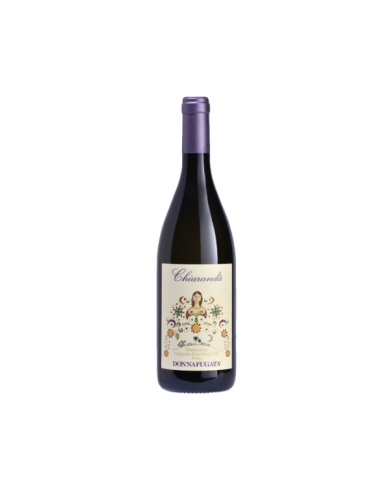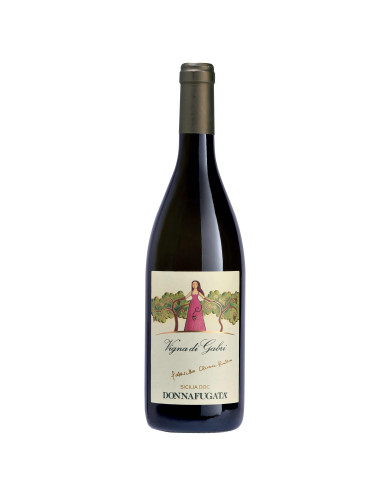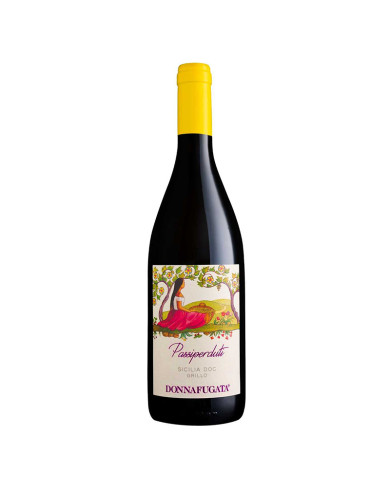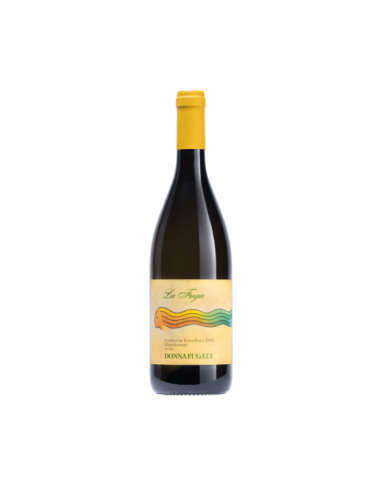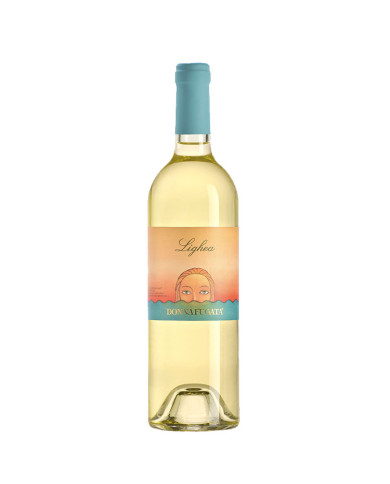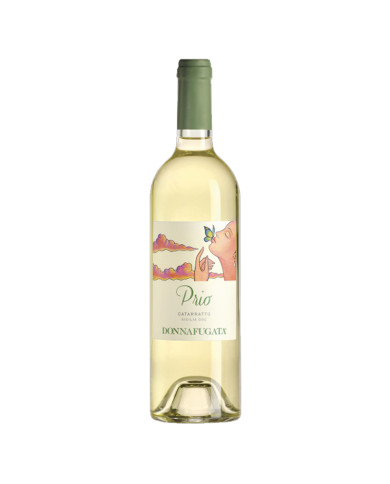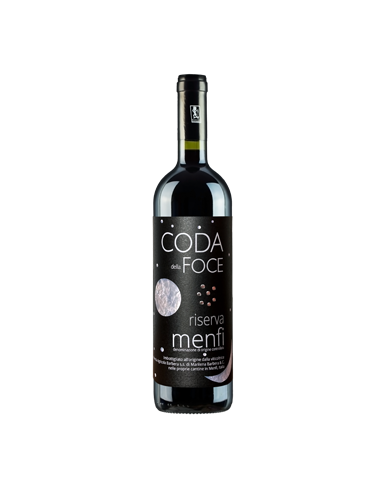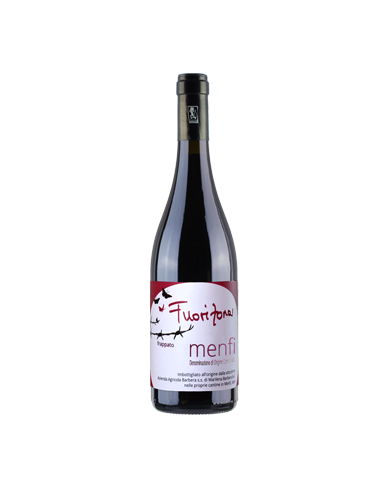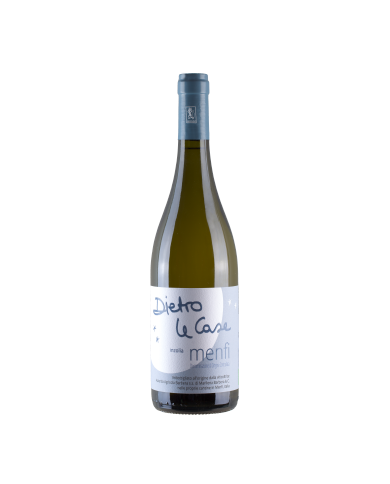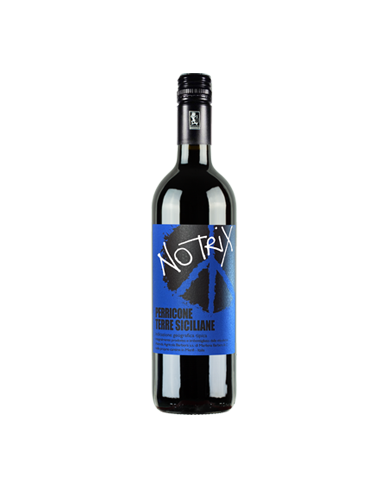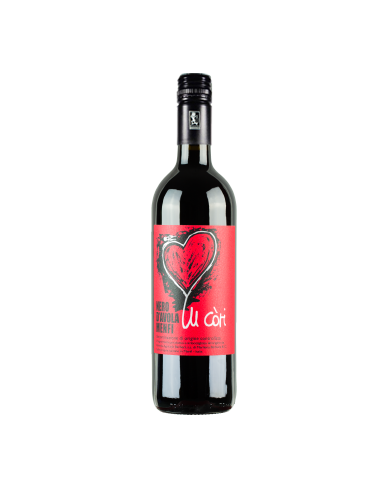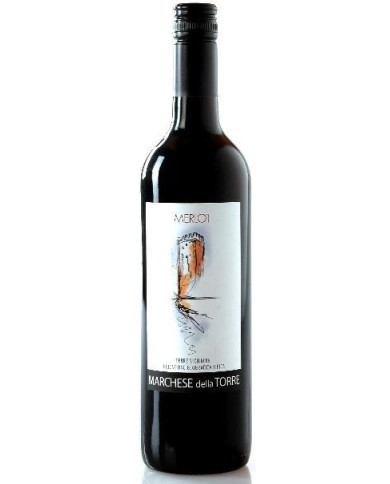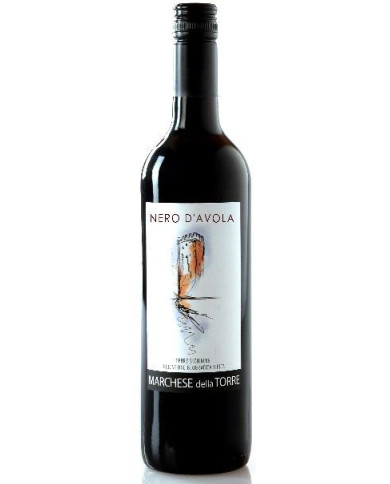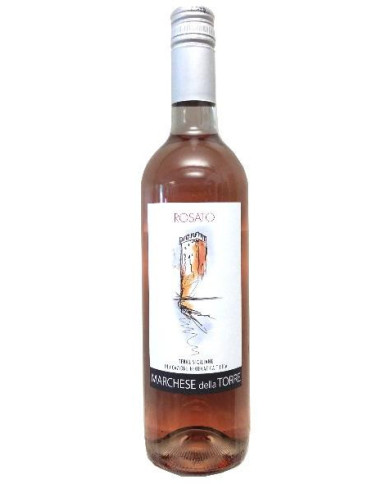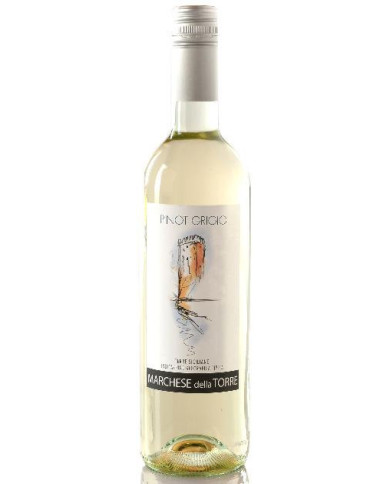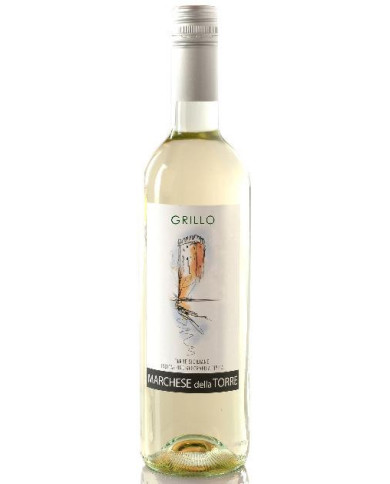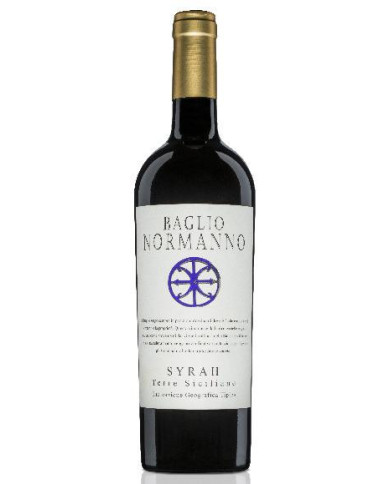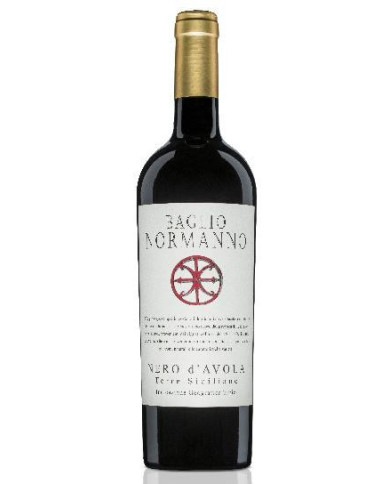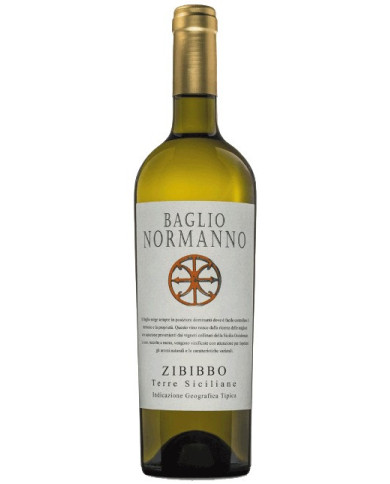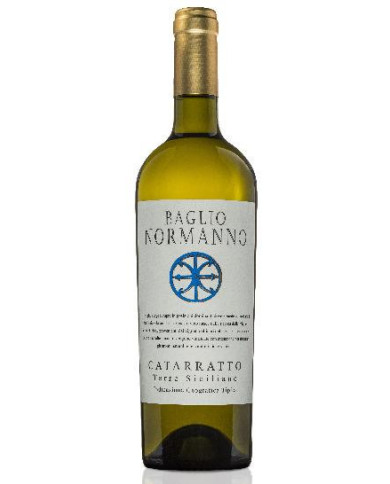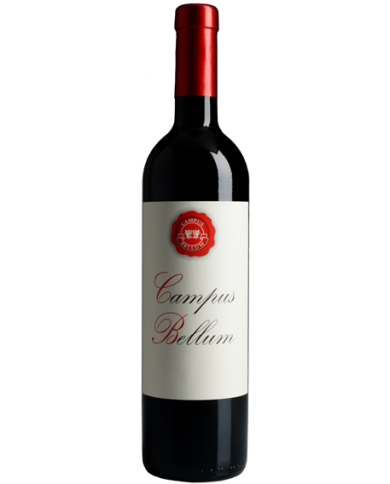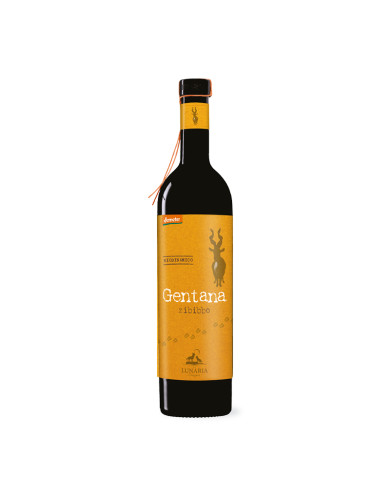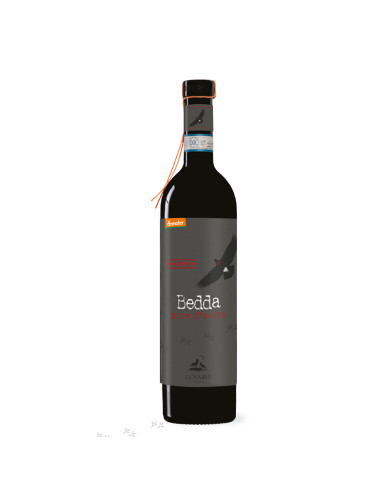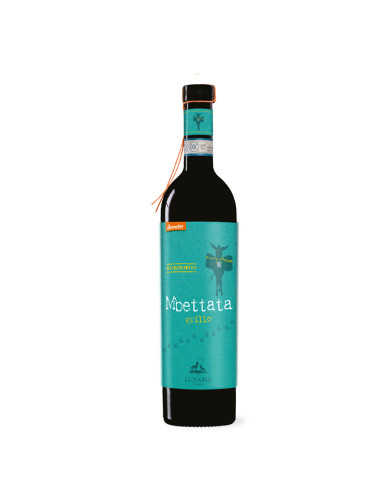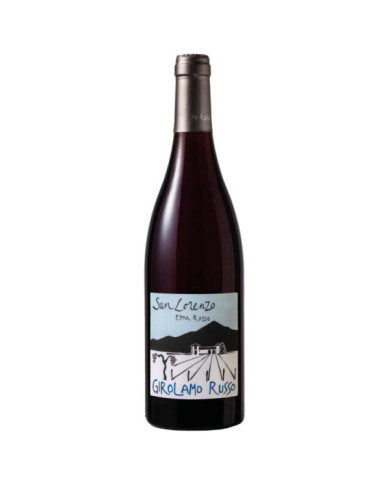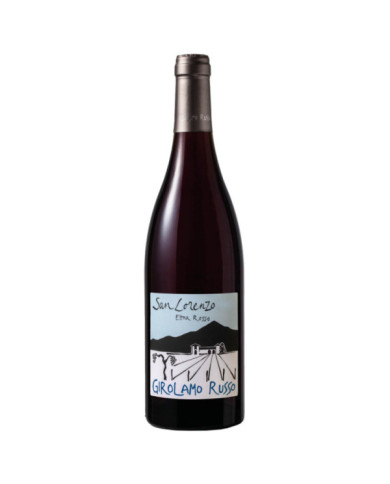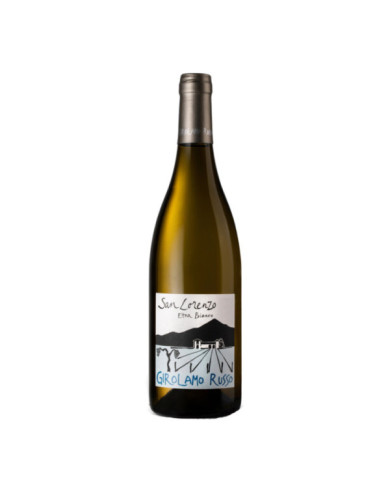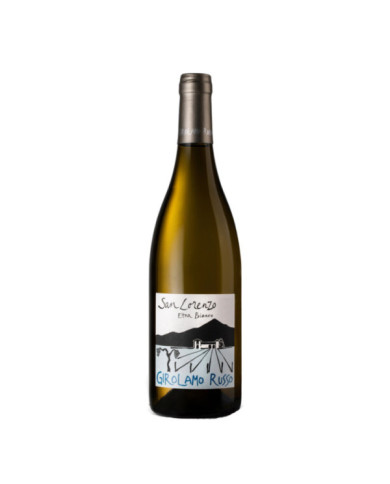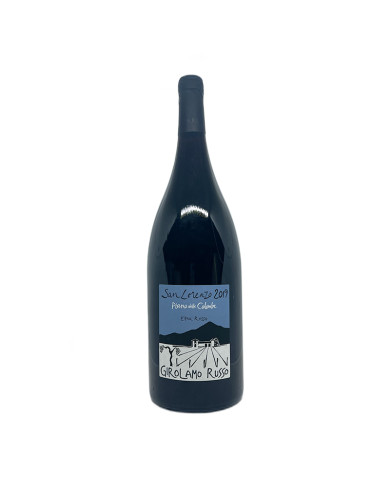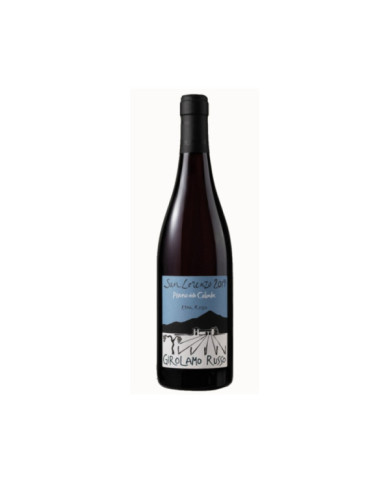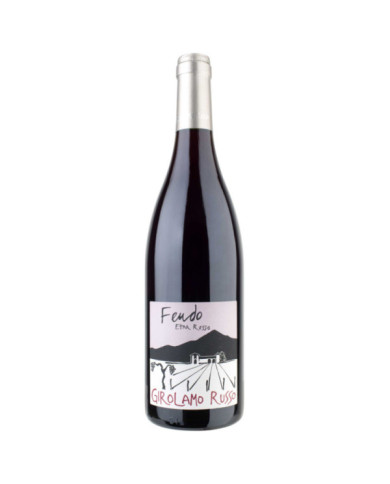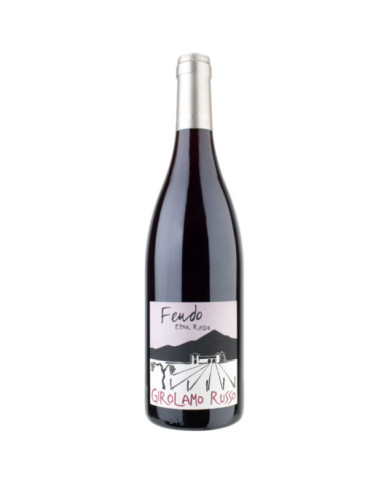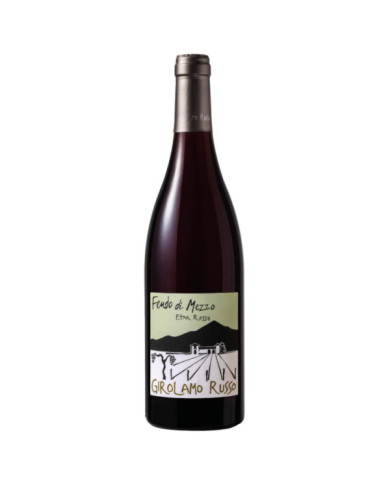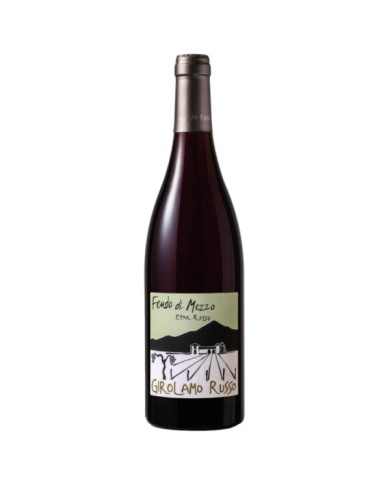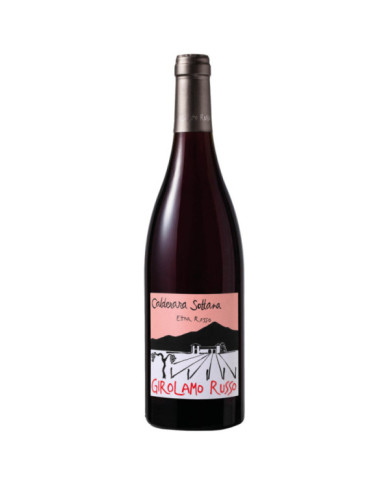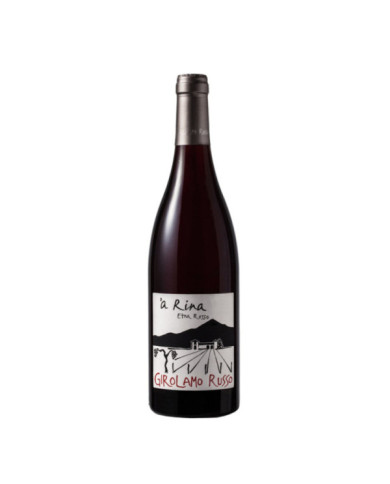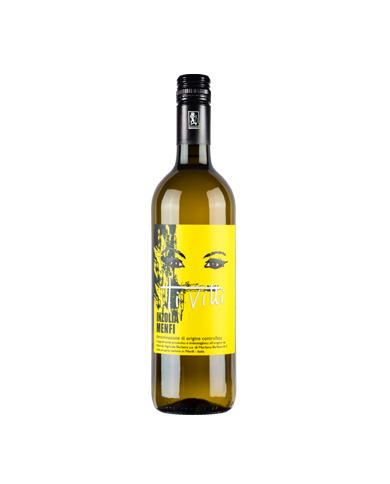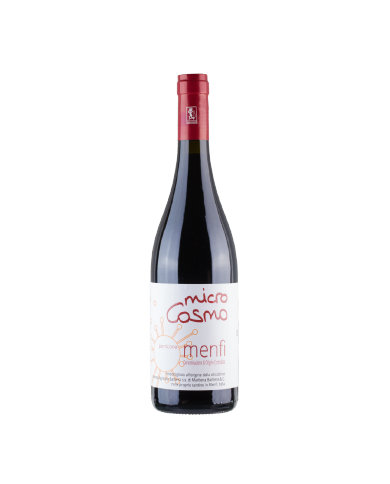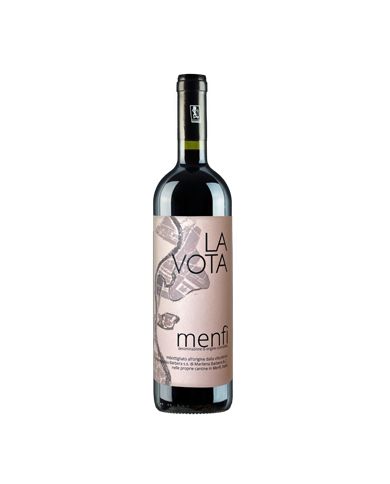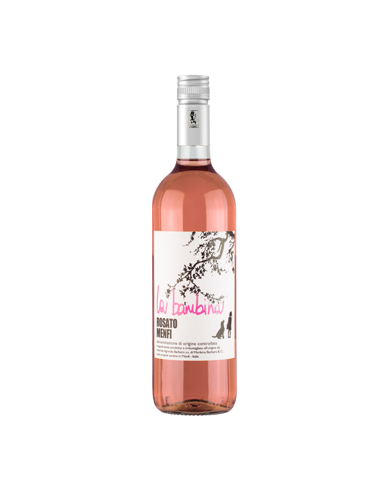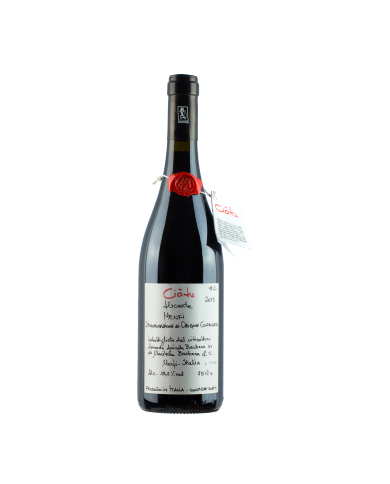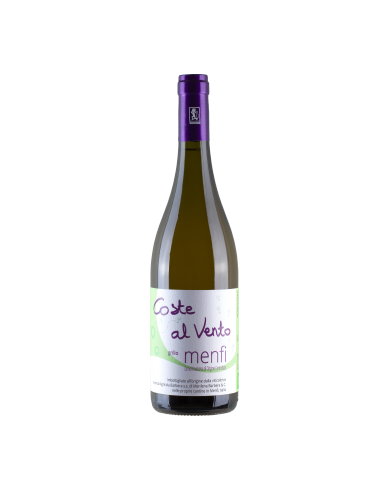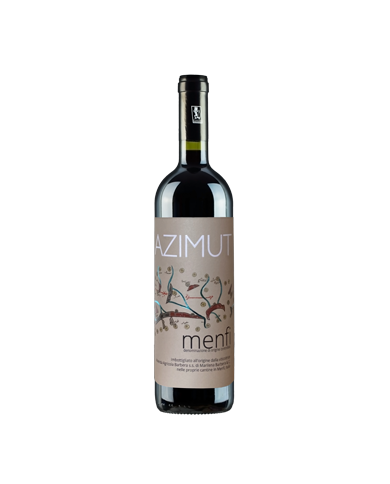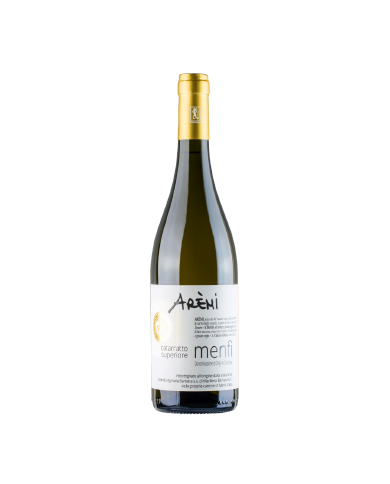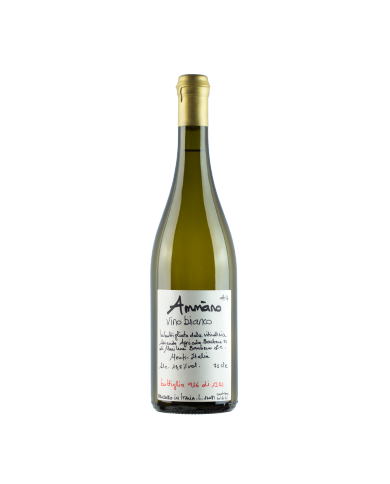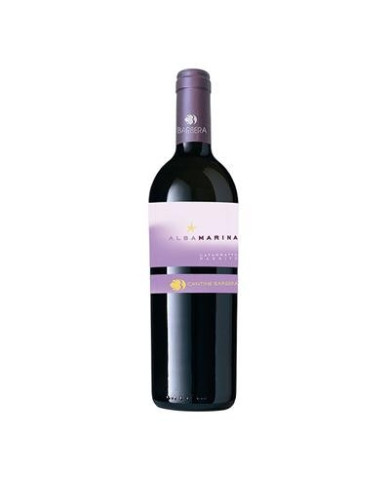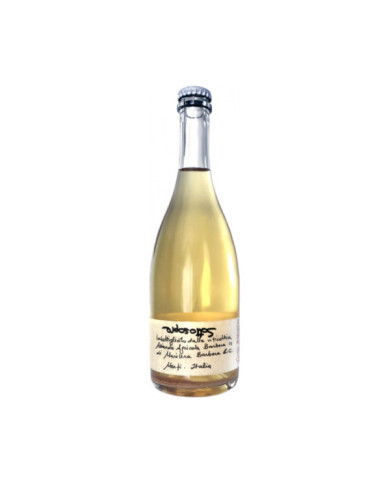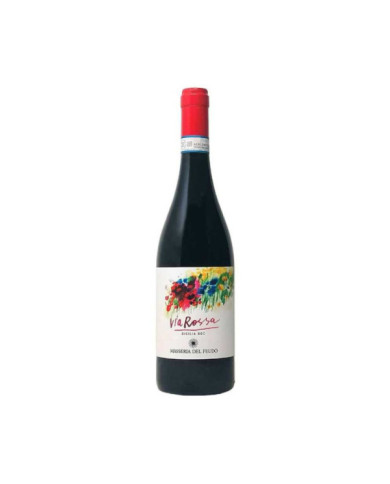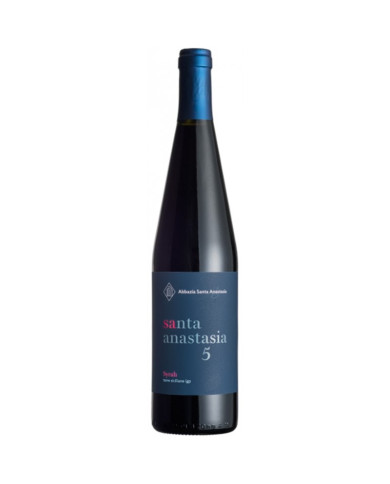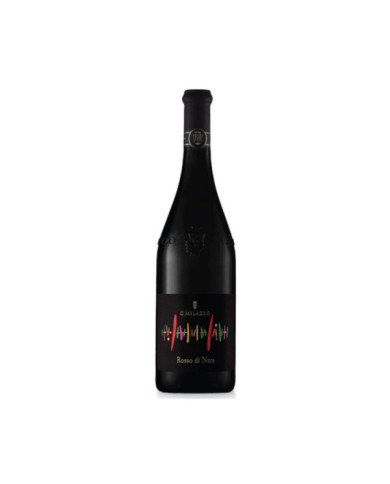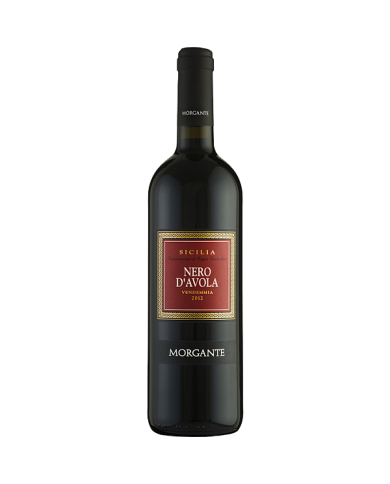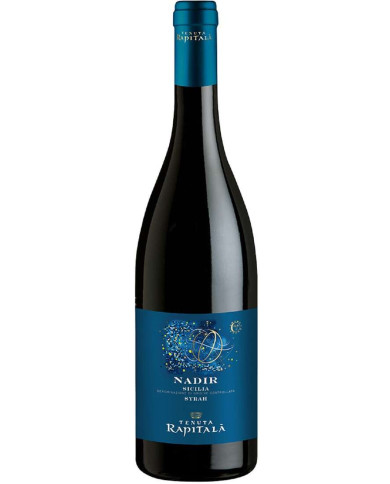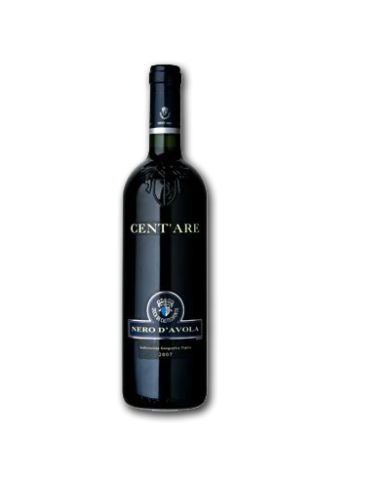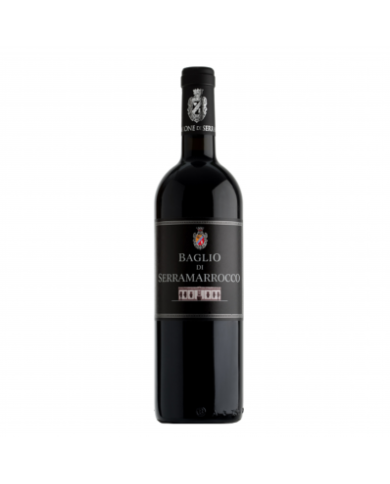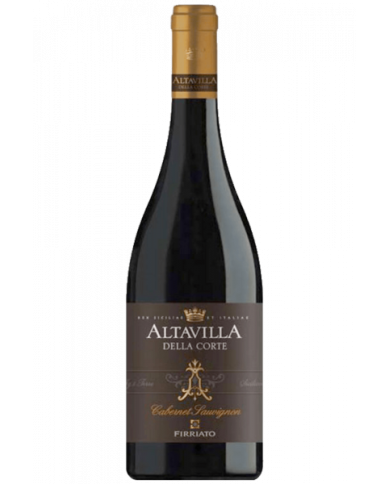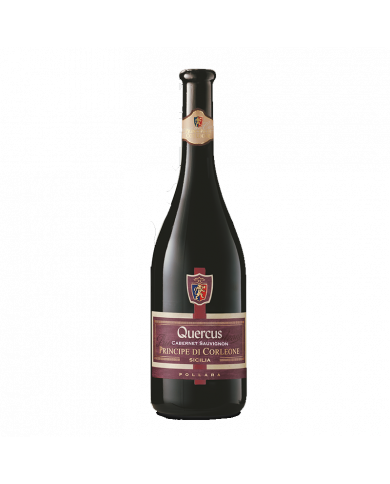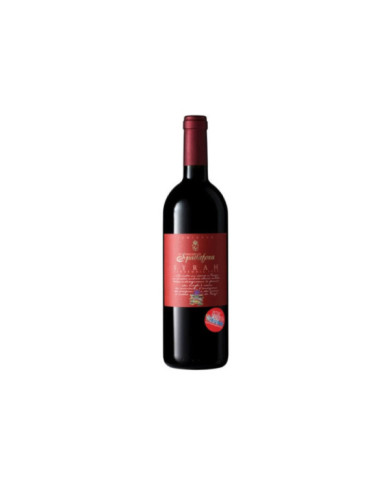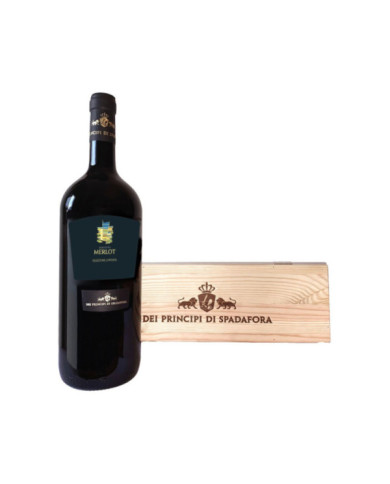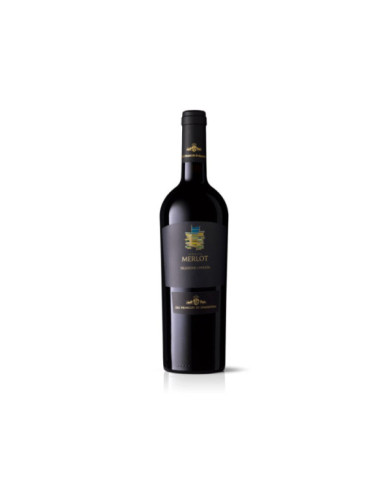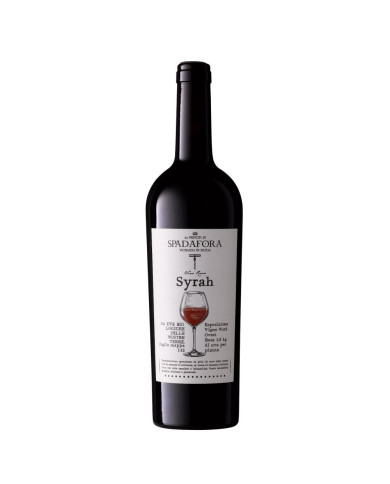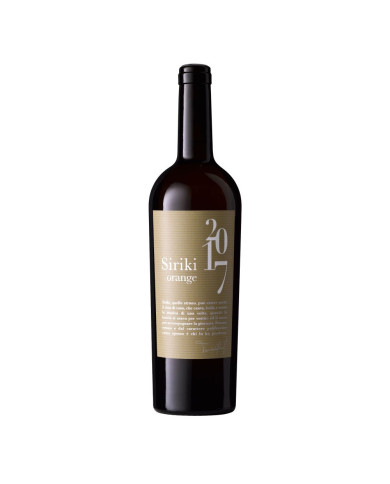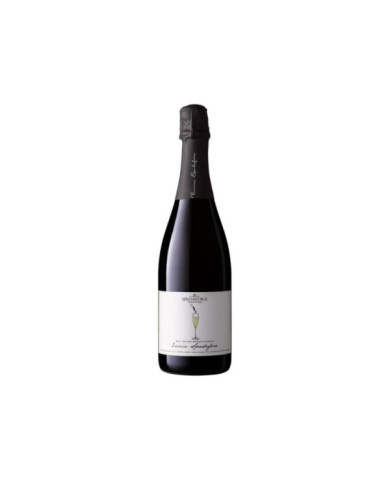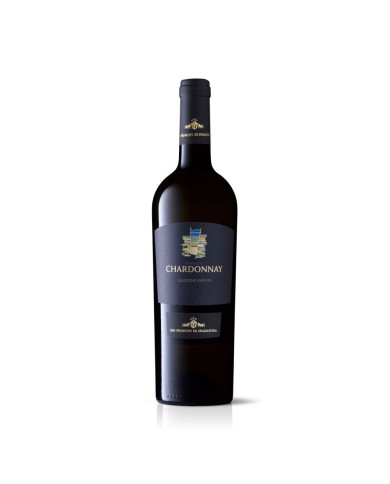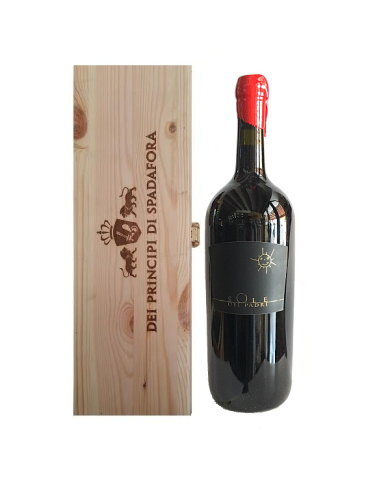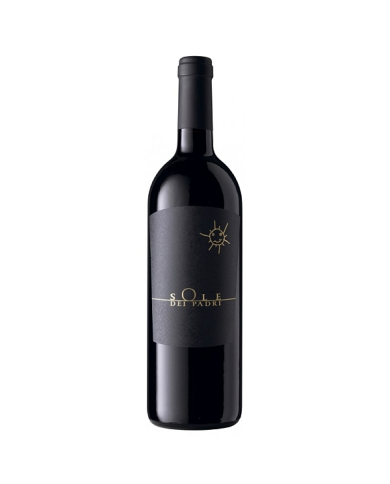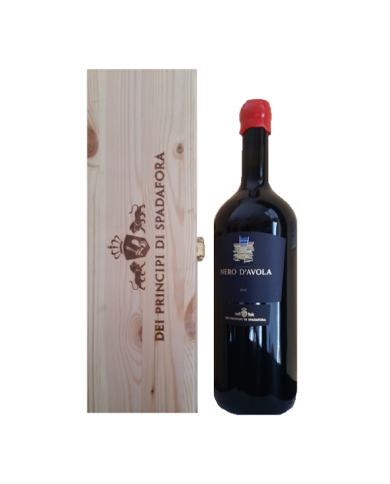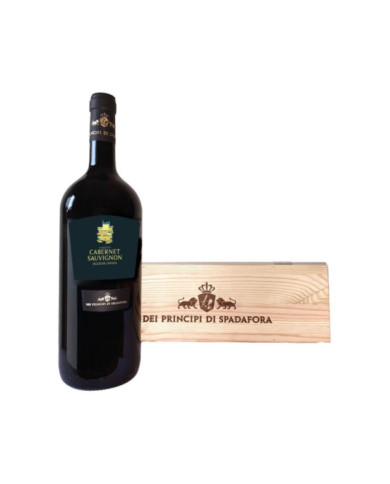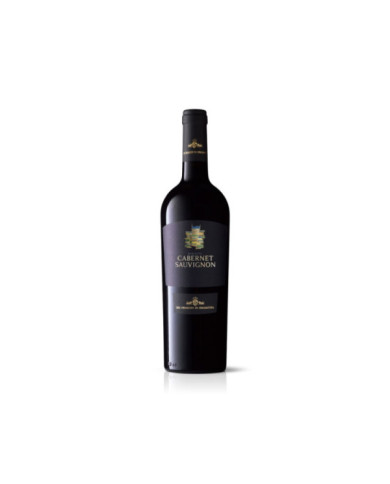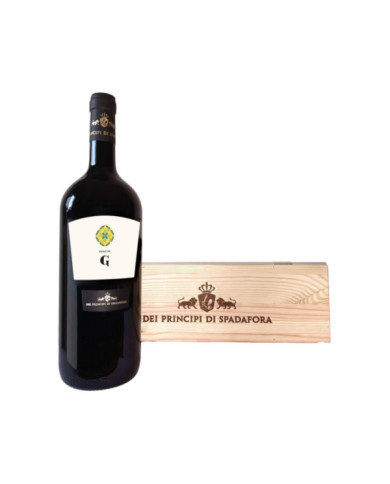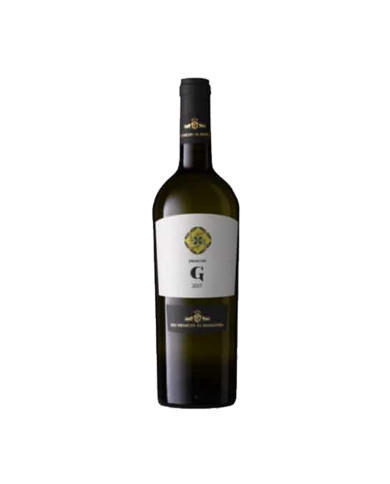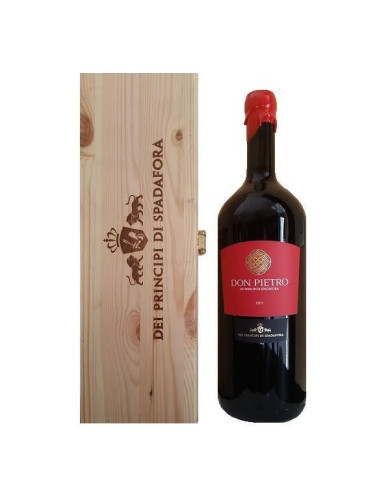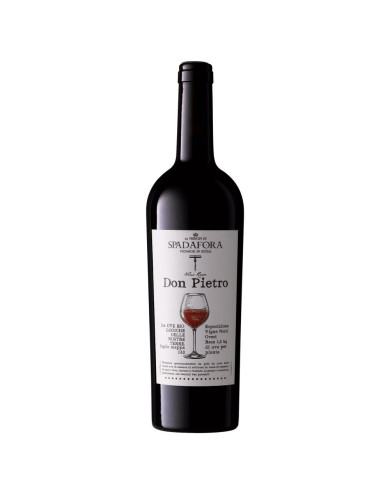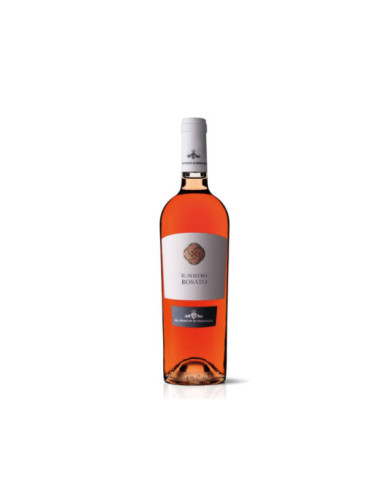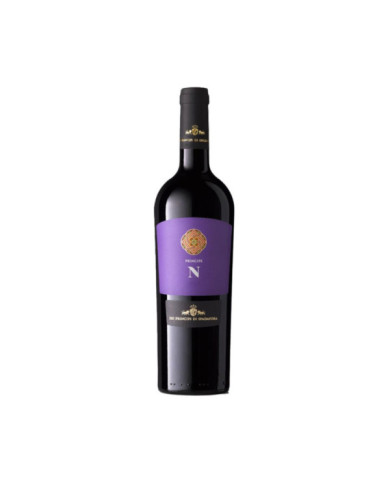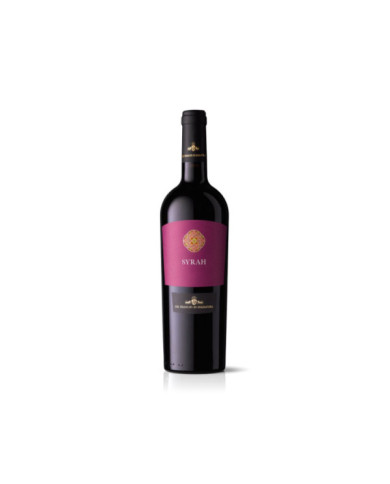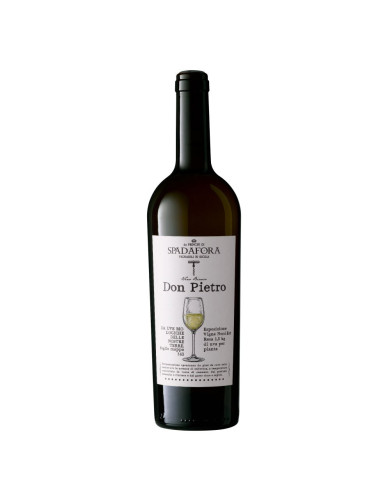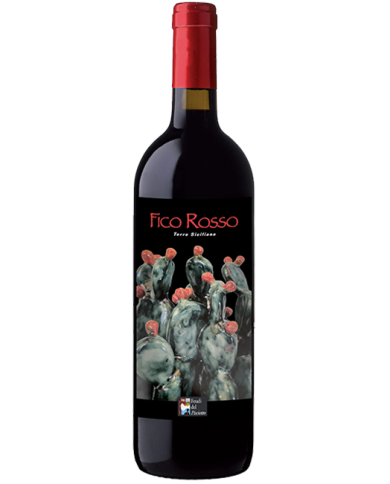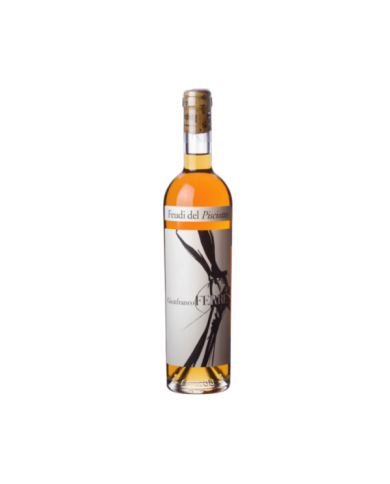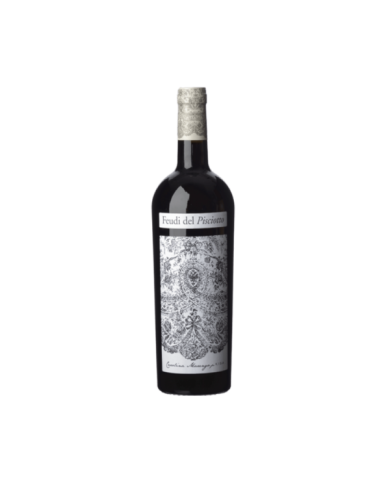Straw yellow, the nose expresses a beautiful olfactory profile composed of notes of yellow pulp fruit, peach and apricot, vanilla and butter. In the mouth it is round, enveloping, structured and well balanced thanks to a good acid component. It closes with a nice finish, of excellent persistence. For the whole meal, the ŌĆ£Chiarand├ĀŌĆØ is a white wine that goes well with typical Sicilian dishes such as pasta alla Norma, mushroom flans, tasty and elaborate white meats.
Vigna di Gabri 2021 has a bright straw yellow color. On the nose it offers notes of white pulp fruit (peach) and citrus (cedar and bergamot), combined with hints of aromatic herbs (sage). The mouth is fresh and tasty, with a perfect taste-olfactory correspondence. It ends with a pleasant persistence. A fine and elegant white with an intriguing personality and surprising longevity.
Brilliant straw yellow, the nose opens on notes of yellow pulp fruit with gentle citrus hints, to which are added notes of acacia deriving from the refinement in the bottle. In the mouth it is persistent and fragrant, with a very pleasant mineral vein. Eclectic in its combinations, Donnafugata 's ŌĆ£Vigna di GabriŌĆØ goes well with seafood first courses. Baked and grilled fish, white meat with sauce, flans and souffl├®. Ideal with cod with tomato sauce, vegetables, roasted porcini mushrooms.
Passiperduti 2022 is bright straw yellow in color with greenish reflections. The nose is broad and deep with floral notes of lavender and broom; the bouquet is enriched with notes of tropical fruits and citrus scents (lime and candied citron). On the palate it has good structure and is savory, mineral and persistent; it is a wine of marked complexity and elegance.
or Chardonnay from the night harvest
With a bright straw yellow color , La Fuga 2019 offers a fresh bouquet with floral notes combined with hints of tropical fruit (pineapple) and Golden apple. In the mouth it is savory and fresh thanks to a pleasant acid vein .
Lighea 2022 has a bright straw yellow color with greenish reflections. On the nose it offers a rich and fragrant bouquet where the typical notes of orange blossom are combined with hints of citrus (cedar and bergamot) and exotic fruit. The fruity and floral notes return in the mouth accompanied by a marked freshness, with good persistence and a pleasant mineral finish.
SurSur 2022, with a bright straw yellow colour, offers the nose a fresh bouquet with captivating notes of white pulp fruit (peaches and cantaloupe melon) combined with hints of wild flowers and mint. In the mouth it is soft, with a return of fruity notes combined with a pleasant freshness.
Prio 2022 has a bright straw yellow color. It stands out for a fragrant bouquet with pleasant citrus scents (cedar and grapefruit) combined with delicate floral notes of elderberry. The mouth is fresh with a perfect taste-olfactory correspondence.
Anthìlia has a straw yellow color. On the nose it presents a fresh and fragrant bouquet with notes of white pulp fruit (peach and medlar) combined with hints of Mediterranean scrub. In the mouth we find the evident fruity note, refreshed by a pleasant flavor. It ends with good persistence.
Damarino 2022 is the first wine in the world to use the Nomacorc Ocean cork, produced by recycling plastic collected in coastal areas, and destined to end up in the oceans. With a light straw color, Damarino combines delicate aromatic sensations of white flowers and fruity notes among which those of citrus fruits stand out. In the mouth it is delicate with a pleasant finish.
Coda della Foce has been defined as a beautiful wine in a blue dress: elegant, never intrusive, at ease in any situation, persuasive with style and personality. Blend of Nero d'Avola and Petit Verdot in variable proportions depending on the vintage, it comes from the assembly of the best carats that have shown a particular personality and evolutionary finesse and is produced only when the characteristics of each harvest and the long aging in large casks allow it to express a superior organoleptic quality. Super Sicilian by birth, citizen of the world by choice of life.
Although originally from Ragusa, most of the Frappato is grown in the province of Trapani, a few kilometers from my vineyards. Menfi and Vittoria have a lot in common: both exposed to the South and therefore to Africa, kissed by the salty wind of the Mediterranean and rich in sandy-limestone soils lying on compact clays. These affinities convinced me to introduce Frappato to Belìce. When I created the FuoriZona label, Liliana Segre's story came to mind about the little girl who, during her deportation to Auschwitz, drew a butterfly flying over the barbed wire. I would like the tiny gesture of drawing that butterfly to bear witness to that message: always choose love, peace, solidarity towards every human being who lives, together with us, on this earth.
In Sicily, "coast" is the side of the hills that gently slope down to the sea, covered by vineyards as far as the eye can see that bask in the sun, unkempt by the fresh Mediterranean breezes. These are the places of Grillo, a fascinating native variety that interprets the beauty of the Menfi terroir with great personality. Son of generous lands, Coste al Vento gives us a full and ripe fruit that blends with the brackish notes brought by the sea winds, in a harmonious crescendo made original by maceration on the skins and fermentation with indigenous yeasts.
The old vineyards of Inzolia planted by my father more than fifty years ago are an extraordinary legacy on which to build the future of viticulture in Belicello. The original clones, perfectly adapted to the particular conditions of the environment to which they belong, exuberantly express the personality and wine culture of the Menfi area. The soil, mainly calcareous and pebbly, gives the wine an intense and at the same time delicate sapidity, great depth and aromatic breadth.
Vibrant and decisive, NoTrix is direct and transparent: it does not want and does not need "embellishments". It is a wine with a brilliant ruby colour, with intense and playful scents of red fruits and geranium flowers. Its solid and well integrated tannins support a palate with an agile and dynamic body, where spicy notes of ginger and star anise accompany the drink towards a saline and very persistent finish. This is how Perricone is, and this is how I like this wine to be: without tricks and without falsehoods, far from oenological models that do not belong to the Menfi winemaking tradition.
Feminine and sensual, Lu C├▓ri tells of a Sicily kissed by the sun and caressed by sea breezes. Its splendid purple livery, edged with violet reflections in its youth, evolves towards ruby with the passing of the years. Ripe red fruits, especially blackberries and raspberries, characterize the bouquet, made intriguing by notes of brine and a slight spiciness. In the mouth it is fragrant, soft and velvety, with delicate tannins, perfectly integrated in a juicy and persistent finish.
Delicate hints of spices and citrus aromas. The palate is well defined with a strong character and a long finish.
Zibibbo has a history spanning thousands of years: it has Egyptian origins and after this first long adaptation to the North African coasts, Zibibbo was brought to western Sicily by the Phoenicians and the Greeks, becoming one of the most widespread and interesting varieties of the western Mediterranean around 800-700 aC During the Roman Empire the variety was also exported to other regions of southern Europe. Zibibbo is known in Sicily mainly by its Arabic denomination, Z'bìb, which simply means "raisins".
The name derives from the "black berry" fruit and from the Syracusan city of Avola. Nero d'Avola on the island was introduced several centuries ago by colonizers from Greece and then it adapted perfectly to this new environment so as to become the most famous and important black grape variety in Sicily. Until the first half of the 20th century, Nero d'Avola wine was used almost exclusively as a blending wine, in recent decades Sicilian winemakers have started the production of this wine alone with truly excellent results.
Grillo is a white grape variety widespread above all in western Sicily. The probable origin lies in what Baron Mendola wrote in 1874: ŌĆ£white Catarratto seed artificially fertilized with Zibibbo in the flowering of 1869 in my Piana dei Peri vineyard near Favara [ŌĆ”] . The same wrote also in 1904 "I hybridized the common Catarratto of Sicily [ŌĆ”] neck Zibibbo, to be able to make a more aromatic Marsala". The Grillo initially finds its origin in the Marsala area and then in the other provinces of the island. Il Grillo is capable of giving wines with a high alcohol content and then having the vocation of being particularly predisposed to ageing. The best Marsala is obtained by vinifying Grillo.
Girolamo Russo's Etna Rosso San Lorenzo was born in vineyards located in Contrada San Lorenzo (Randazzo), in the extraordinary wine-growing panorama of Etna, a terroir particularly suited to the production of wines of great value, which benefits from unique temperature ranges.
Girolamo Russo's Etna Rosso San Lorenzo was born in vineyards located in Contrada San Lorenzo (Randazzo), in the extraordinary wine-growing panorama of Etna, a terroir particularly suited to the production of wines of great value, which benefits from unique temperature ranges.
Etna Bianco "San Lorenzo" is a mineral and delicate white wine, made with Carricante grapes and other local varieties that grow at high altitudes on the sandy soils of the Great Volcano. The nose has a fine and very mineral olfactory profile, with suggestive notes of white pulp fruit, citrus fruits and pleasant floral sensations. It reveals a slender and dynamic body, of great progression and freshness, with a clear mineral trail
The San Lorenzo Piano delle Colombe magnum Etna Rosso DOC wine is a label signed by Girolamo Russo. With marked organoleptic characteristics, it is the perfect companion for robust first courses, grilled red meats, game, venison and noble poultry. Harmonious and characteristic, the San Lorenzo Piano delle Colombe magnum Etna Rosso DOC wine preserves the richness of the Nerello Mascalese grapes grown in the Randazzo area (CT)
Although the ruby color of young Nerello Mascalese is quite pale, here we find an extra point of density. It's not a casuality. The concentration offered by the old vines can be seen right from the colour. Then the nose. Closed in the first phase, it opens slowly offering first delicious notes of small red fruit, then much more. And then here's the strawberry, then the blueberry, a touch of currant. And yet another spicy nuance, an earthy, acrid, almost bloody hint and then again an undergrowth finish. The mouth recalls in the flavors everything that the eye and nose have anticipated. The wine is enveloping, the texture creamy. However, excessive softness is never felt, on the contrary. The mineral salts of the soil give a textbook sapidity, the acidity of the mountain is felt all right. And then the tannin, fine, well blended with the material, capable of giving rhythm to the sip. Final of great depth, clean elegance.
Girolamo Russo's Etna Bianco Nerina was born in vineyards located in the extraordinary wine-growing panorama of Etna, a terroir particularly suited to the production of wines of great value and in which the vines are trained as saplings, in this case at approx. 700 m. slm
Girolamo Russo's Etna Bianco Nerina was born in vineyards located in the extraordinary wine-growing panorama of Etna, a terroir particularly suited to the production of wines of great value and in which the vines are trained as saplings, in this case at approx. 700 m. slm
The Etna Rosso Feudo by Girolamo Russo was born in vineyards located in the Feudo district in Randazzo, in the extraordinary wine-growing panorama of Etna, a terroir particularly suited to the production of wines of great value, thanks to unique temperature ranges.
The Etna Rosso Feudo by Girolamo Russo was born in vineyards located in the Feudo district in Randazzo, in the extraordinary wine-growing panorama of Etna, a terroir particularly suited to the production of wines of great value, thanks to unique temperature ranges.
Girolamo Russo's Etna Rosso Feudo di Mezzo has still young and slightly rough tannins. Of an intense ruby red, it offers hints of ripe fruit, cherry, marasca cherry, aromatic herbs, balsamic essences and notes of vanilla and tobacco on the nose. On the palate it is soft, but with tannins still a little rough, with an excellent structure, a complex of great fullness of taste and persistence
Girolamo Russo's Etna Rosso Feudo di Mezzo has still young and slightly rough tannins. Of an intense ruby red, it offers hints of ripe fruit, cherry, marasca cherry, aromatic herbs, balsamic essences and notes of vanilla and tobacco on the nose. On the palate it is soft, but with tannins still a little rough, with an excellent structure, a complex of great fullness of taste and persistence
Girolamo Russo's Etna Rosato was born in the lower old vineyards located in the San Lorenzo district, in the extraordinary wine-growing panorama of Etna, a terroir particularly suited to the production of wines of great value, thanks to unique temperature ranges.
The red Etna Calderara Sottana by Girolamo Russo was born in the vineyards located in the Contrada Calderara Sottana district in Randazzo, in the extraordinary wine-growing panorama of Etna, a terroir particularly suited to the production of wines of great value, thanks to unique temperature ranges.
Vibrant and decisive, NoTrix is direct and transparent: it does not want and does not need "embellishments". It is a wine with a brilliant ruby colour, with intense and playful scents of red fruits and geranium flowers. Its solid and well integrated tannins support a palate with an agile and dynamic body, where spicy notes of ginger and star anise accompany the drink towards a saline and very persistent finish. This is how Perricone is, and this is how I like this wine to be: without tricks and without falsehoods, far from oenological models that do not belong to the Menfi winemaking tradition.
Feminine and sensual, Lu C├▓ri tells of a Sicily kissed by the sun and caressed by sea breezes. Its splendid purple livery, edged with violet reflections in its youth, evolves towards ruby with the passing of the years. Ripe red fruits, especially blackberries and raspberries, characterize the bouquet, made intriguing by notes of brine and a slight spiciness. In the mouth it is fragrant, soft and velvety, with delicate tannins, perfectly integrated in a juicy and persistent finish.
The Little Girl is play, curiosity, discovery. It is the wine that I have dedicated to women, to their strength, to their ability to fight for what they believe in without being frightened by difficulties. Its delicately coppery color is fascinating as a prelude to a fragrant bouquet of wild rose and wild strawberries, pomegranate, watermelon and lemon peel. Savory and crunchy on the palate, it is a very pleasant wine, whose persistence is accentuated by an iodized, almost marine finish.
The old vineyards of Inzolia planted by my father more than fifty years ago are an extraordinary legacy on which to build the future of viticulture in Belicello. The original clones, perfectly adapted to the particular conditions of the environment to which they belong, exuberantly express the personality and wine culture of the Menfi area. The soil, mainly calcareous and pebbly, gives the wine an intense and at the same time delicate sapidity, great depth and aromatic breadth.
Alicante is a variety of Spanish origin, introduced in Sicily during the dominations of the XV-XVI century and widespread in many regions of the Mediterranean, where it is also known by the name of Garnacha, Grenache and Cannonau. In Menfi its personality is influenced by the marine microclimate which enriches the typical fruity softness of the vine with a particular saline note and makes the wine very expressive and very pleasant. Ci├Ātu is love, it is breath and breath, it is the energy of the sun, the profound strength of the earth, the very breath of life.
In Sicily, "coast" is the side of the hills that gently slope down to the sea, covered by vineyards as far as the eye can see that bask in the sun, unkempt by the fresh Mediterranean breezes. These are the places of Grillo, a fascinating native variety that interprets the beauty of the Menfi terroir with great personality. Son of generous lands, Coste al Vento gives us a full and ripe fruit that blends with the brackish notes brought by the sea winds, in a harmonious crescendo made original by maceration on the skins and fermentation with indigenous yeasts.
Ar├©mi, one of the four suits with which the gambling cards are painted, as well as the community cards. The coin suit, which has the color of gold and like gold is precious in the game of broom and seven and a half. Catarratto is liquid gold, culuri d'ar├©mi: intense and brilliant gold that lights up from the sun and the sea of Sicily, full of the millenary history that skilled hands have handed down to us, from generation to generation, from the Greek motherland to the fertile countryside of Memphis. Ar├©mi is love for the land, respect for knowledge, conscious acceptance of a heritage to be preserved.
By hand, to recover the value of manual work, the care and joy in doing it. By hand, to underline the absolute craftsmanship of the production of a wine made without the aid of machinery, without additives or synthetic oenological products, in which the human component is at least as important as the natural one. Only grapes and hands: in a world where machines and homologation increasingly replace man and his creativity, hands are, perhaps, the thing to which we must return.
Sottosopra is a sparkling wine obtained with the ancestral method and is bottled without prior disgorgement. If you love strong flavours, drink it as it is, with all its yeasts, or keep it upside down in the fridge for 24 hours if you want to disgorge it before tasting it. Intense golden yellow, very veiled because still on its lees. ...
Produced from Nero d'Avola grapes with the short Charmat method, Rosso di Nera di Milazzo is a young and fruity sparkling Sicilian wine, whose sweetness blends with the fresh and acidic profile.
Baglio di Serramarrocco is a Sicilian red wine from Nero d'Avola grapes vinified in steel tanks. It stands out for its intense fruity bouquet and an uncommon softness and elegance. This wine is produced from a careful selection of only bunches of Nero D'avola and is characterized by complex aromas and an elegant structure.
Among the first pure Cabernet Sauvignon produced in Sicily. For his personality and originality he has been awarded many times over the years. Expresses the territory from which it comes: Corleone. With a purplish-red colour, it has a complex and persistent aroma, reminiscent of blackcurrant fruits and spices.
The Schietto Nero d'Avola IGP Sicilia ŌĆ£Dei Principi di SpadaforaŌĆØ is a red, still and dry wine, vinified with Nero d'Avola grapes. This wine is vinified in cement vats, aged in large barrels for one year and at least six months in the bottle. Lo Schietto is the closing of the circle, at least for now.
Outspoken Cabernet Sauvignon Sicily IGP Dei Principi di Spadafora. An extraordinary pure Sicilian wine, an organic Cabernet Sauvignon with an intense purple-red color and a rich, intense, fruity aroma. The taste is intense, fruity and clear aroma. full and round, soft and well present tannins.
It is a fresh and elegant wine, with a superior structure to the white Don Pietro, included in the Don Pietro line. 7,000 bottles come out.
Don Pietro is a Sicilian red organic wine, produced with Cabernet Sauvignon, Merlot, Nero d'Avola grapes. The wine shows an intense ruby red color and nuances of garnet red, little transparency.
From 100% Nero d'Avola. Fruity and aromatic ros├® wine, balanced tannins and the right structure. Cellar: Dei Principi di Spadafora.
Still and dry red wine, vinified with 100% Nero d'Avola grapes, with a pleasant scent of wild berries with pleasant vegetal sensations, a long aromatic persistence and soft tannins.
From Catarratto grapes comes a savory, fresh and light white wine, but with character. Its name recalls the Spanish origins of the Spadafora family; it is the most produced wine and is produced with a commitment equal to that which the company puts into the production of more expensive wines. The straw yellow colour, the scent of white fruit, the savory and fresh taste make it a simple and linear wine, which should be drunk within two years, to be combined with fish first courses and seafood appetizers. It should be served very cool in order to enhance its immediate drinkability.
Chardonnay and viognier blended at 50%. The first wine of Gurra di Mare with vineyards as far as the beach of Porto Palo (Menfi), the ideal terroir for the two international vines.
Two great international vines, Merlot and Cabernet Sauvignon, which express a great personality in the Sicilian terroir. A wine of great structure, but which does not lose in elegance and drinkability. The sculpture on the label is by the great ceramist Giacomo Alessi from Caltagirone. A wine that tells the essence of Sicily.
One of the best Italian sweet wines Label designed by Gianfranco Ferr├©. Aromatic notes and perfect acidity stand out. A product characterized by balanced flavors, with perfect sweetness and offering clear hints of dried fruit, honey and rose.
A straw yellow colored wine characterized by rich notes of apple and pear, which make it immediately recognizable and appreciated. The taste is warm and dry, slightly tannic and with a citric scent.
It stands out for its ruby red color and for a fresh scent of red berries and sweet spices. On the palate round, with a lively acidity, the wine is well balanced and persistent.
Discover the secrets of Sicilian wines: A journey through the winemaking tradition of Southern Italy
Sicily is one of the richest regions of Italy both for its history and for its winemaking tradition. Sicilian wines are among the most appreciated in the world and are famous for their quality. In this article we will discover what the secrets of these delicacies are and how to enjoy them to the fullest.
Sicilian Wines: An ancient and rich history
The tradition of wine production in Sicily dates back to the Greco-Roman period, when the island was rich in native varieties. Over the centuries, the production of Sicilian wines has remained at the heart of the region's culture and economy. Today, Sicilian wines are famous all over the world for their unique quality.
Sicilian wines: variety and characteristics
There are numerous varieties of Sicilian wines. The most famous are Nero d'Avola, Nerello Mascalese, Frappato and Grecanico. These wines are characterized by a great aromatic complexity: hints of red fruits, spices, flowers and vanilla. Nero d'Avola is an intense, full-bodied red wine, while Nerello Mascalese is lighter and fruitier. Frappato is a light and aromatic ros├® wine, while Grecanico is a fresh and fruity white wine.
How to choose the right wine
Choosing the right wine comes down to personal preferences and the occasion. For example, if you want to drink a high quality red wine, then you should opt for a Nero d'Avola. If you want a lighter and fruitier wine, you can choose a Nerello Mascalese. For a white wine, Grecanico is a great choice.
How to serve a Sicilian wine
To enjoy a Sicilian wine to the fullest, it must be served at a temperature of 18-20┬░C. It is advisable to serve red wines in fairly large glasses, with a wider base and a narrower top. White wines, on the other hand, are served in smaller glasses with a narrower base and wider top.
The right combination
Each wine has its own ideal pairing. For example, Nero d'Avola is a very versatile wine and goes well with meat-based dishes, such as grilled steak for example. Nerello Mascalese, on the other hand, goes best with fish or vegetable dishes. Frappato is a wine that goes well with lighter dishes, such as a mixed salad. Grecanico is a wine that goes well with fish or vegetable dishes.
5 tips for Sicilian wines
1. Choose a quality wine. Sicily is full of excellent quality wines, so choose a product from a reliable producer.
2. Taste more wines. Taste multiple Sicilian wines to find out which one you like best.
3. Store wine well. Store Sicilian wines in a cool, dry place away from heat sources.
4. Choose a right match. Pair Sicilian wines with the right dishes to get a unique taste experience.
5. Don't be shy. Don't hesitate to drink Sicilian wine and experiment with new varieties.
Discovering the secrets of Sicilian wines is a unique experience. Sicily is one of the richest regions of Italy and Sicilian wines are among the finest in the world. In this article we have explored the history of these wines, their characteristics, how to choose and serve a Sicilian wine and how to pair it with the right dishes. By following these tips you will be able to enjoy these delicacies to the fullest and discover the secrets of Sicilian wines.
Denomination Wines of Sicily
Sicily is a region famous all over the world for its wine production. Thanks to the Mediterranean climate, the presence of volcanoes and the richness of the soil, the island is able to produce some of the most appreciated wines in the world. In this article we will explore the main denominations of Sicilian wines, their vines and their organoleptic characteristics, to discover the excellence of Sicilian wine production.
Introduction to wine production in Sicily
The production of wine in Sicily has very ancient roots, dating back to Greek and Roman times. The region boasts a great variety of soils, from the volcanoes of Etna and the Aeolian Islands to the hills of the hinterland, which allow for the cultivation of numerous native and international vines. Thanks to the use of innovative techniques and attention to quality, Sicilian wine production is constantly growing, offering the market high quality wines, capable of satisfying every palate.
The main denominations of Sicilian wines
The denominations of wines of Sicily are divided into four main categories: Denomination of Controlled Origin (DOC), Denomination of Controlled and Guaranteed Origin (DOCG), Typical Geographical Indication (IGT) and Table Wines. Let's see in detail the characteristics of each one.
Denomination of Controlled Origin (DOC)
The denomination of controlled origin (DOC) is a quality mark that is assigned to wines that meet specific production criteria. In Sicily there are 23 DOCs, among which Cerasuolo di Vittoria, Moscato di Pantelleria and Etna Rosso stand out.
Cerasuolo di Vittoria
Cerasuolo di Vittoria is a red wine produced in the south-eastern part of the island, in the province of Ragusa. The wine is produced with grapes from the Nero d'Avola and Frappato vine, in variable percentages, and has an intense ruby red colour, a fruity aroma and a dry and soft flavour. It goes perfectly with red meats, cured meats and aged cheeses.
Muscat of Pantelleria
Moscato di Pantelleria is a sweet wine produced on the island of Pantelleria, located southwest of Sicily. The wine is produced with grapes from the Moscato di Alessandria vine, locally called Zibibbo, and has an intense golden yellow colour, an intense and aromatic bouquet and a sweet and soft flavour. It goes perfectly with sweets and desserts.
Etna Red
Etna Rosso is a red wine produced on the slopes of Etna, the highest active volcano in Europe. This wine is mainly produced with grapes from the native Nerello Mascalese vine, which grows on volcanic and high altitude soils.
What is Sicily's most famous wine?
A: Sicily's most famous wine is Etna Rosso, a red wine produced on the slopes of Etna.
Denomination of Controlled and Guaranteed Origin (DOCG)
The denomination of controlled and guaranteed origin (DOCG) is the maximum expression of the quality of Italian wines. In Sicily there is only one DOCG, the Cerasuolo di Vittoria. This dry red wine is produced in the Vittoria area, in the province of Ragusa, with grapes of the Nero d'Avola and Frappato vine in variable percentages. The wine has a ruby red colour, a fruity aroma and a soft and persistent flavour. It goes perfectly with red meats, cured meats and aged cheeses.
Typical Geographical Indication (IGT)
The Typical Geographical Indication (IGT) identifies wines produced in a specific geographical area and which have some typical characteristics. In Sicily there are four IGTs: Terre Siciliane, Salina, Val di Mazara and Alcamo. IGT wines can be produced with international grape varieties, such as Chardonnay, Cabernet Sauvignon and Merlot, but also with native varieties.
Table wines
Table wines are wines produced in Sicily that do not fall into the DOC, DOCG or IGT categories. Despite this, many of them are of the highest quality, produced with native grapes and according to traditional methods. Among the best known are Nero d'Avola and Grillo.
Sicily is a region with a great winemaking tradition, which has been appreciated all over the world for the quality of its wines. Thanks to the presence of volcanoes, the Mediterranean climate and the variety of the terrain, the island is able to produce wines of the highest quality, capable of satisfying every palate. From DOC to IGT, from white wines to red wines, Sicilian wine production is a real winemaking excellence.
FAQs
What are the native vines of Sicily?
Among the main native vines of Sicily are Nero d'Avola, Frappato, Inzolia, Grillo and Zibibbo.
How many DOC wines are there in Sicily?
In Sicily there are 23 DOC wines.
What are the main pairings of Sicilian wines?
The red wines of Sicily go perfectly with red meats, cured meats and aged cheeses, while the white wines are ideal with fish dishes, seafood and fresh cheeses.
What is the difference between DOC and DOCG?
The main difference between DOC and DOCG is that DOCG guarantees a superior quality of wine, with even stricter production criteria and more frequent controls.
What are the best known wines of Sicily?
Among the best known wines of Sicily are Etna Rosso, Cerasuolo di Vittoria, Nero d'Avola and Grillo.

